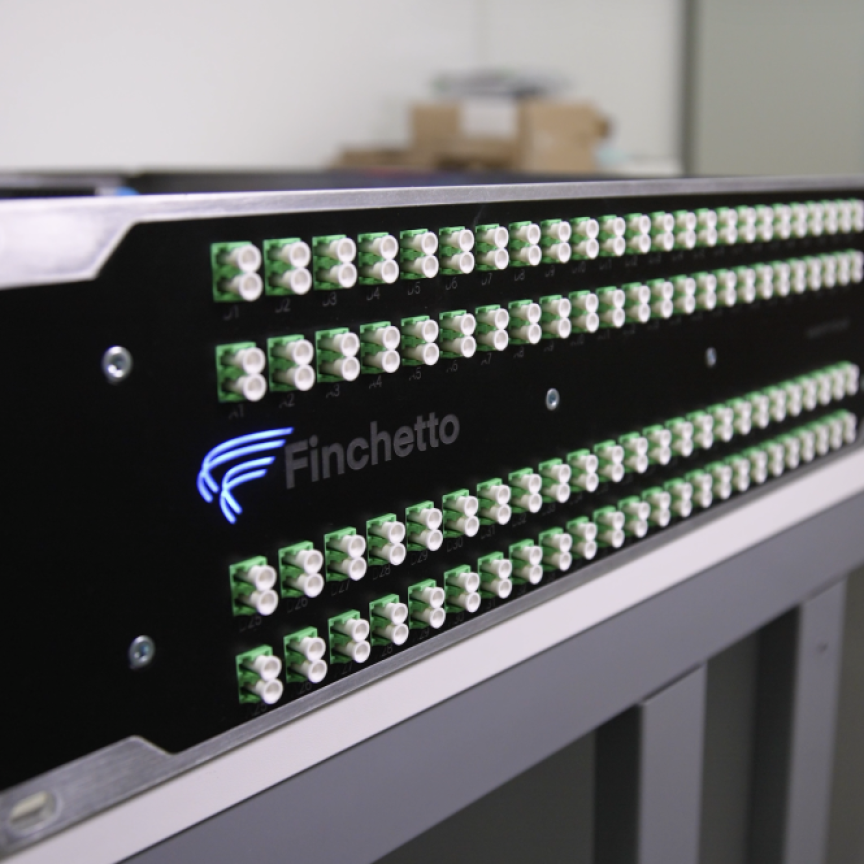Full capacity? When it comes to 800G coherent, Keely Portway considers how to address capacity-reach
One of the biggest topics on the collective mind of the optical communications industry this year – no, not that one – has to be fifth-generation coherent optics. There has now been a raft of trials and demonstrations, highlighting 800G wavelength achievements.
As an example, Verizon completed a successful test in its live fibre network to move 800Gb/s of data on a single wavelength across longer distances. A 800Gb/s single-wavelength transmission was accomplished over 667km between Nashville and Atlanta; and a 600Gb/s single-wavelength transmission over 2,283km from Atlanta to Memphis with a loop back in Memphis.
As one might expect, this has prompted much debate surrounding the performance of 800G wavelengths in real-life scenarios, at the heart of which is the ‘capacity versus optical reach’ trade-off. The challenge, of course, with high-capacity optics, has been their limitation for longer-haul applications because they have relied on higher order modulation, leaving the 200 to 400G wavelengths as the reserve of long-haul networks. In addition, all 800G generation coherent optical engines do not perform in exactly the same way.
Cost reductions
Paul Momtahan, director of solutions marketing at Infinera, believes that wavelength capacity reach has a direct impact on the cost-per-bit. ‘If we can get 50 per cent more capacity at 600G, rather than 400G, for a particular reach requirement, it can reduce the cost-per-bit by a third. If we can get double the capacity, 800G rather than 400G, this halves the cost-per-bit.’
Other benefits of increasing capacity reach, said Momtahan, include reductions in space, power consumption and total cost of ownership.
Momtahan went on to explain that he feels there are three categories that impact the capacity-reach of high-capacity optics. These are ultra-high baud rates – which provide the key lever for increasing wavelength capacity-reach and enable the use of lower-order modulation to achieve the same data rate; innovative features – such as Nyquist subcarriers and probabilistic constellation shaping (PCS); and a high modem signal-to-noise ratio (SNR).
‘We came out with these trials of 800G at long-haul distances that blew away people’s expectations of what you could do with 800G,’ he explained. ‘We kept getting asked, “how are you doing it? What are the tricks up your sleeve?” And the answer is that it’s not one particular “trick”, it is all of these things in combination with each other.’
Take Modem SNR, for example, which Momtahan acknowledged hasn’t previously been spoken about that much in the industry at a marketing level. ‘But, for example,’ he said, ‘if you crank an optical engine to 96GBd at 800G, you get a lot of noise generated inside the optical engine. So, this isn’t the noise that comes from outside the engine from the amplifiers or the fibre, that’s the noise inside the engine. That becomes a very critical factor, especially when you want very high data rates at 800G.’
Keep it all inside
To get true performance, particularly at 800G, said Momtahan, you need high modem SNR. ‘This is the real challenge,’ he said, ‘if you increase the baud rate – like if you increase the speed of the engine in your car, you get noise and distortion. The trick is to increase the baud rate, but keep the noise and distortion from inside the engine low.’
SNR alone is not the ‘magic solution’. To summarise, in order to realise the benefits offered by 800G performance, Momtahan believes that what is needed is a combination of three key enablers: an ultra-high baud rate; innovative features, such as subcarriers, PCS and dynamic bandwidth allocation; and high modem SNR to keep the noise inside the modem.
Momtahan went on to explain the key factors that will ensure these enablers: high performance components, and co-design. ‘The performance of the individual components’, he said, ‘so the ASIC/DSP, analogue ASIC and photonics – you need very high performance for each of these.’
Then it is important how these individual components are designed together, for optimum performance. ‘You need a holistic co-design to make sure these components work together,’ he continued, ‘paying special attention to the RF interconnect, and to package it in an optimal way.’
In addition, he stated, it is helpful to achieve these factors if you have deep vertical integration, with key disciplines including much of what has been referred to in this article: so, the ASIC/DSP, analogue ASIC, the PIC, the RF interconnect, the co-design, the packaging as well as the manufacturing.
To ensure the performance of 800G, all three of these enablers need to be put in place, according to Momtahan. ‘Some of these are slightly more important at 800G,’ he said ‘and slightly less important at 400G, and vice versa, but they all interact, and you need elements of all three, if you want to get the performance.’


